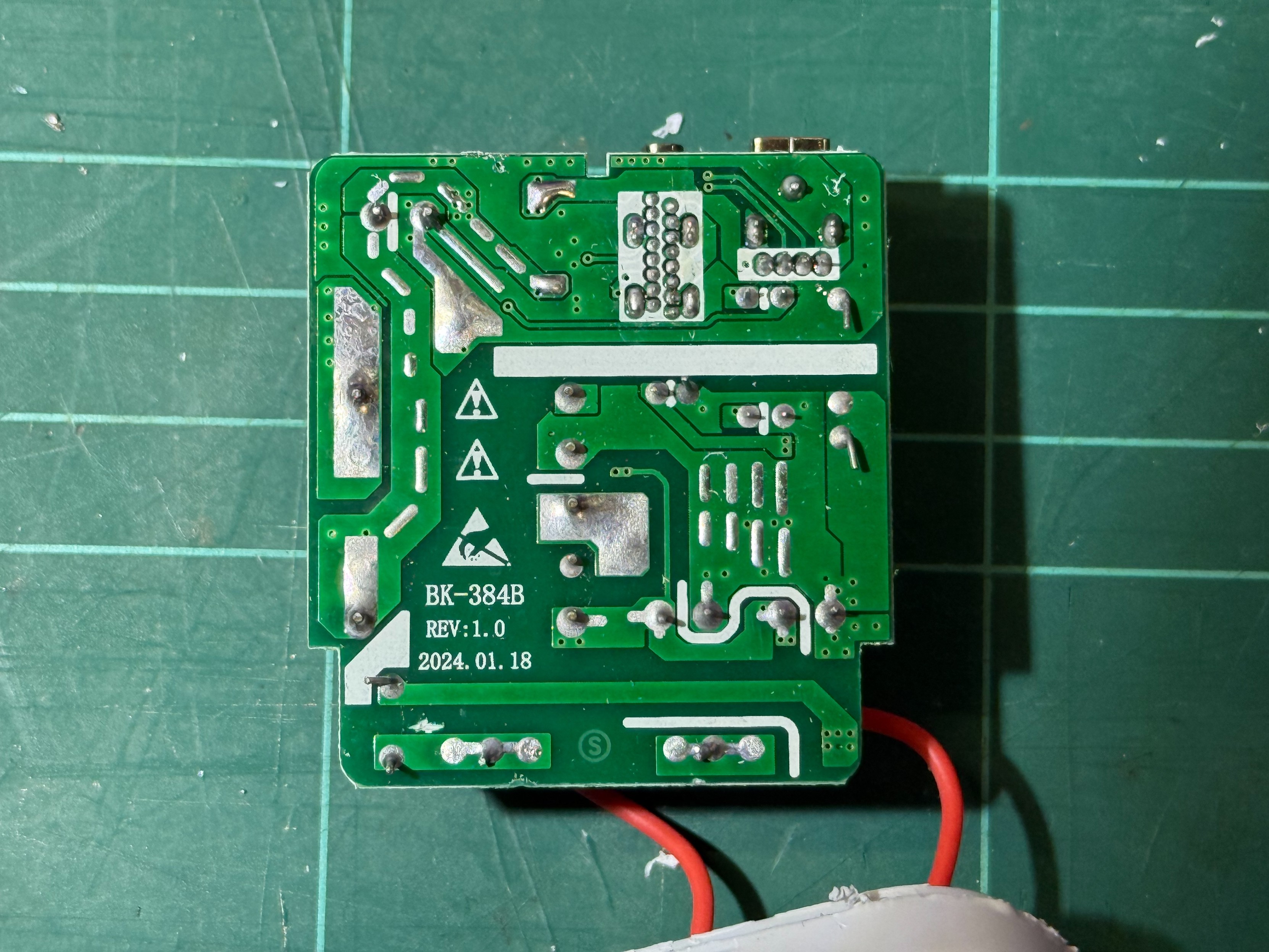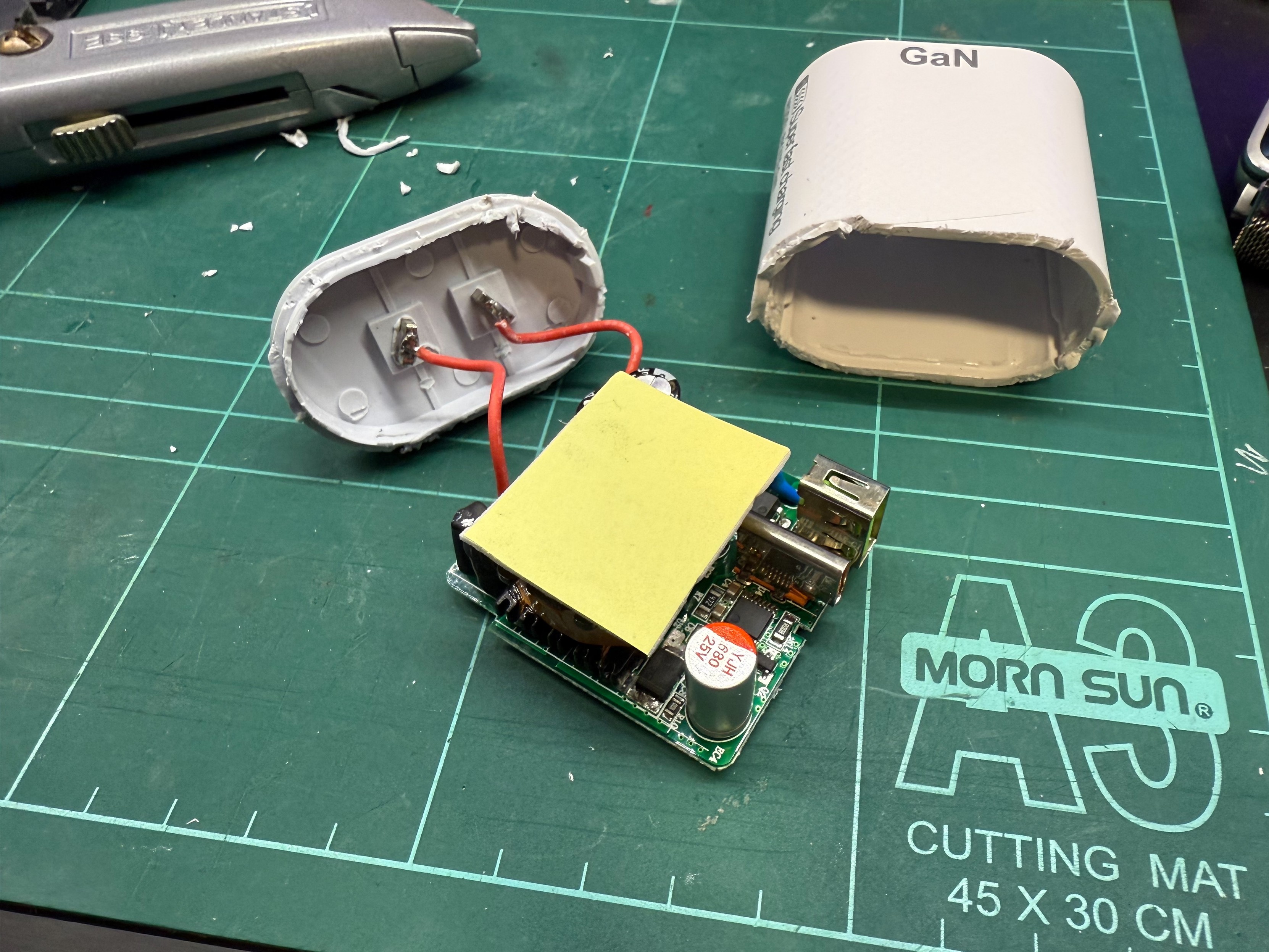Here’s a #teardown of one of these cheap, unbranded “65W”/33W GaN chargers from AliExpress!
The one I tested was purchased from this listing, for only AU$5 each! (At the time.)
https://www.aliexpress.com/item/1005006320421253.html
First up, the advertising is a bit misleading, as they only support 33W on either outlet, one at a time (or shared, at 5V only). But it does support QualComm QC 2 and 3 on the USB A port, providing up to 20V 2A there.
On the USB-C, it also supports USB PD 3.0 and PPS from 3.3-16V, 2-3A.
I tested one non-destructively for insulation resistance at 500V and as well as sustained USB output, and it passed just fine. But taking things a step further, here’s what’s inside.
One decent quality 2-layer FR4 PCB with solder mask and full silkscreen! It’s marked “BK-384B 33W / Rev 1.0 / 2024.01.18”
(Cont. 1/2)
#Electronics




